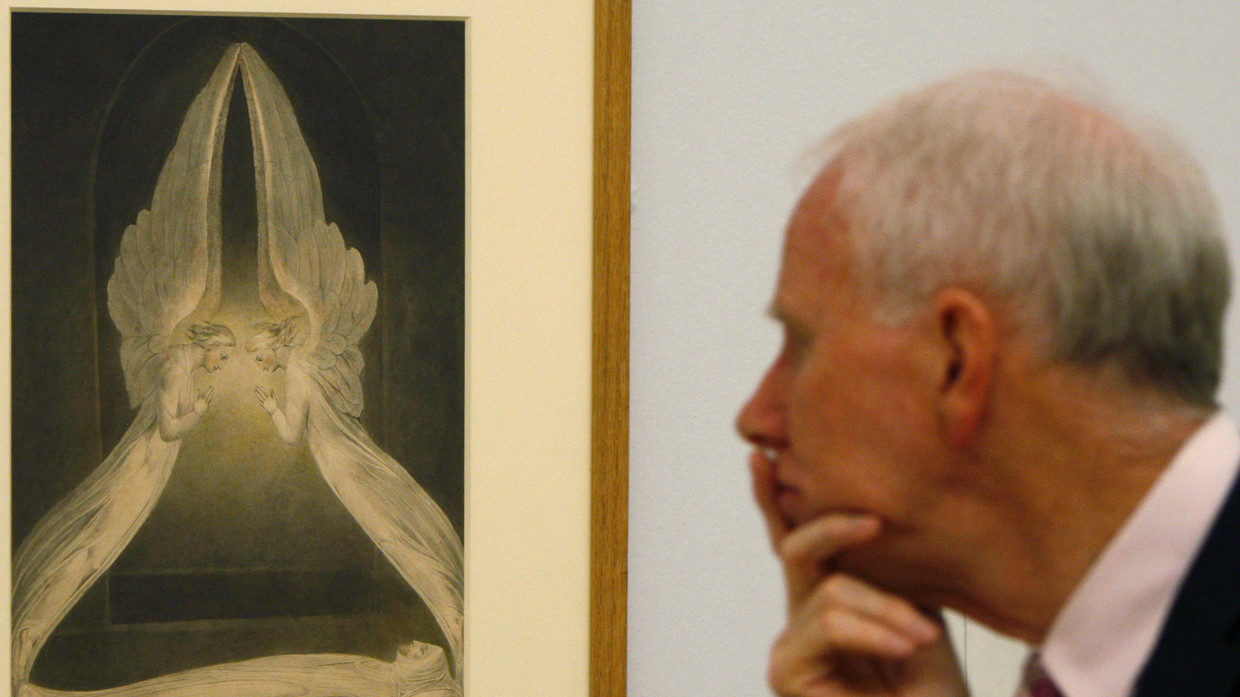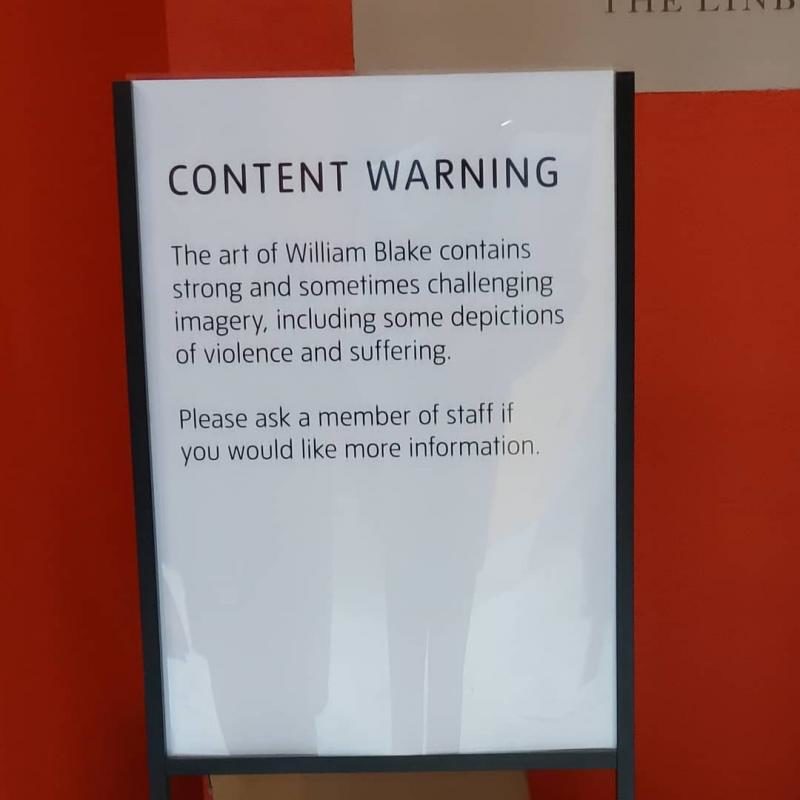
Images that surfaced on social media appear to show a cautionary message that greets those who are brave enough to survey 300 original prints and paintings by William Blake, described as the largest collection of the British artist's work in nearly 20 years.
"The art of William Blake contains strong and sometimes challenging imagery, including some depictions of violence and suffering," the warning says. The placard advises distressed art lovers to seek out museum staff if they require further coddling.
The warning, it seems, did not sit well with those who came to see some priceless art - and not be treated like children.
"Suffer, snowflakes, MELT!" wrote one miffed Blake fan. "Great art is free to shock. May such beautiful lines and gorgeous hues ever be the greatest of your worries."
An equally peeved netizen expressed amazement that there are actually people who are so fragile that they require content warnings at art museums.
Are we really so surrounded by snowflakes and wilting lilies who take offense at everything that such labels are necessary in art museums for artists like William Blake?The Tate's bizarre hand-holding even caught the attention of art critics. One review of the exhibition noted that the museum "thought it necessary to warn us that one vitrine contains an image of 'the brutal treatment of an enslaved person.'"
At this rate, one might expect similar cautionary messages to accompany paintings of famous battles. After all, who will shield us from the horrors of canvas-based violence?
The urge to safeguard grown adults from content that might not be suitable for toddlers has a long and proud history.
In 2017, a major British theatre company, the Royal Court, began issuing 'trigger warnings' at its more risqué performances to avoid upsetting audience members.
That same year, the University of Glasgow introduced 'trigger warnings' for its theology course over fears students may be traumatized while learning about the crucifixion of Jesus. Since then, everything has gotten much, much worse.




Seriously, I remember as a child being told to grow some thicker skin. The problem as I see it, is the snowflakes haven't had to endure enough personal hardships to understand that you cannot protect yourself from all the things that could tear you apart at the seams.